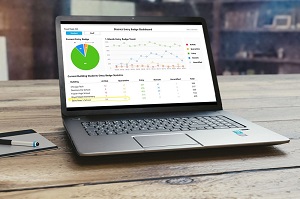As many schools across the nation are being asked to report their confirmed and suspected cases of COVID-19, many schools are wondering how to handle the process of obtaining and reporting the sensitive information.
When schools and organizations turn to a technological solution for handling their pandemic safety processes and protocols, it not only makes it easy to observe and report safety data, it allows the organization to more quickly take action and make data-driven decisions. Having a digital system to monitor student and staff COVID-19 symptoms allows the school district to act immediately when a report of a positive COVID-19 test is submitted; however, many people are probably wondering how a process like this works.
When you utilize technology to facilitate pre-screening, this is all part of the data collection process. Staff and the parents of students are sent daily surveys through email, and when staff and parents complete the health survey and they are given a status, the way they answered the questions is collected. So, if there is a need to retrieve that information because someone tested positive, the school can conduct what we call a pre-contract tracing list.
This means, it can be determined who was in school the 48 hours prior to the discovery of the positive test, and then it can be determined which classes and those within those classes were also present during the same time period. While it cannot determine close contact with the COVID-19 positive person, it can serve as a solid starting point for health officials to start their investigation and determine if notifications and/or additional testing are required.
Can you imagine doing this process manually? You would have to take the manually completed surveys and compare that with the attendance sheets, to verify who was actually in each class.
The effectiveness of this process is realized with the speed, accuracy, and labor reducing aspects of an automated system. The use of an automated system effectively takes what is an insurmountable task for most of our schools and brings all of those tasks to a manageable level.
Additionally, should a school have an exposure, there are going to be questions asked from several different directions (parents, staff, community members, media, school boards, health officials, etc.), and schools will want to make sure they have the answers to those questions. More importantly, the school district will want to have confidence in their data and the ability to confidently answer those questions.
Anytime the mention of sharing data comes up, people naturally worry about the privacy of personal information. In addition to apps like CrisisGo maintaining the highest levels of security and being COPPA compliant, there are other existing measures in place to ensure the privacy of safety information. HIPPA and FERPA are specifically designed to protect student and teacher confidentiality. After the pandemic has been declared over, there will be a requirement to dispose of all of the information created during the emergency to be disposed of. As the pandemic goes on, the information collected by digital systems like Safety iPass are kept secure and only accessed by the appropriate school and safety leaders.
If you’d like to make sure your pandemic safety data collection capabilities are where they need to be to keep your school or organization safe, take a look at how Safety iPass is helping other organizations across the nation












No Comments Yet
Let us know what you think